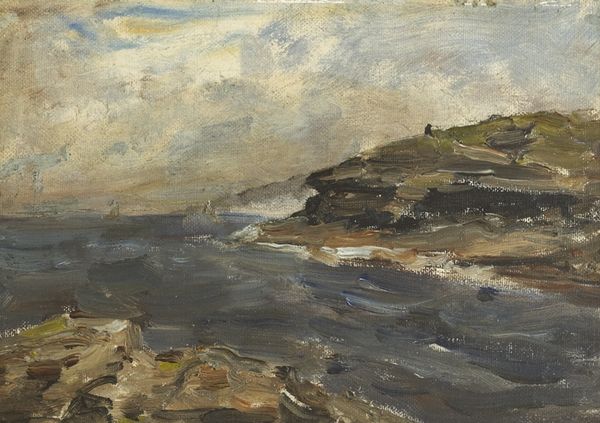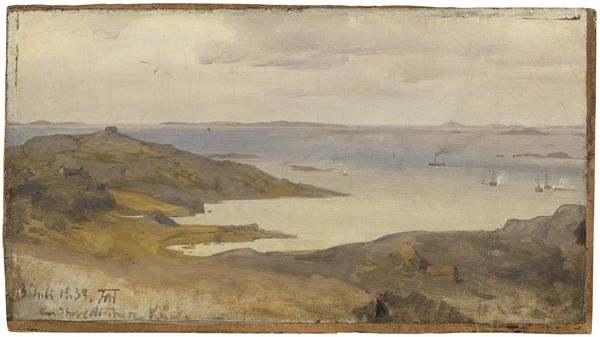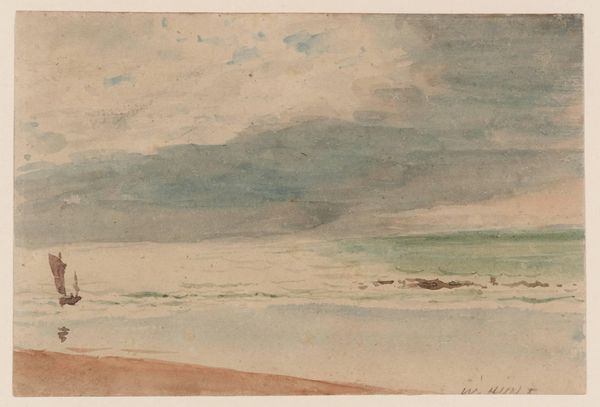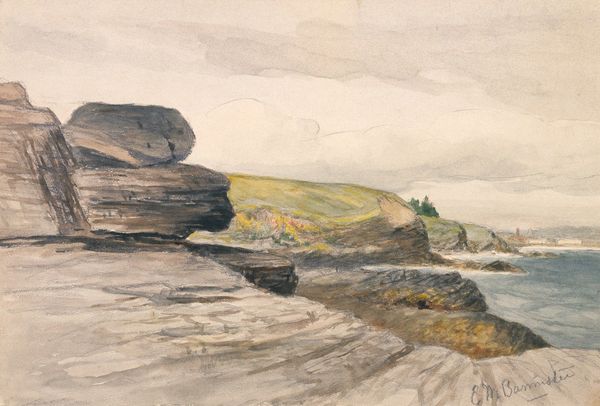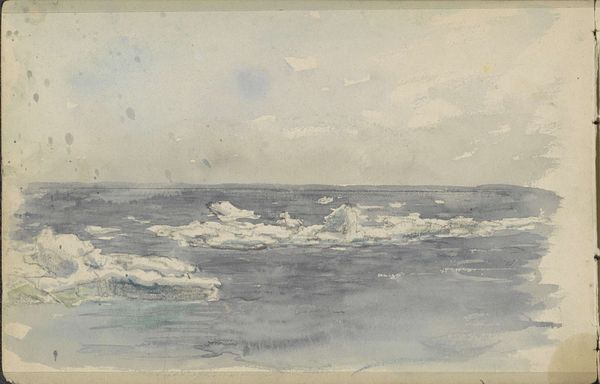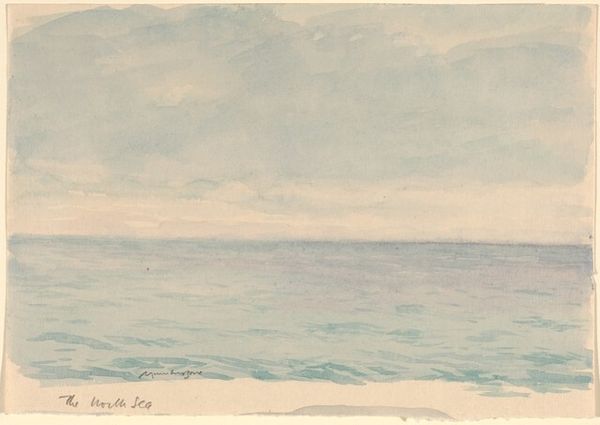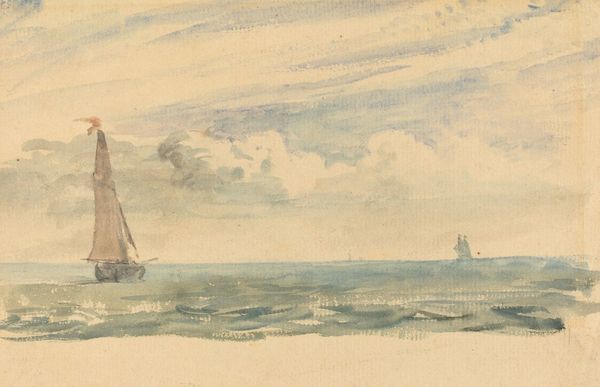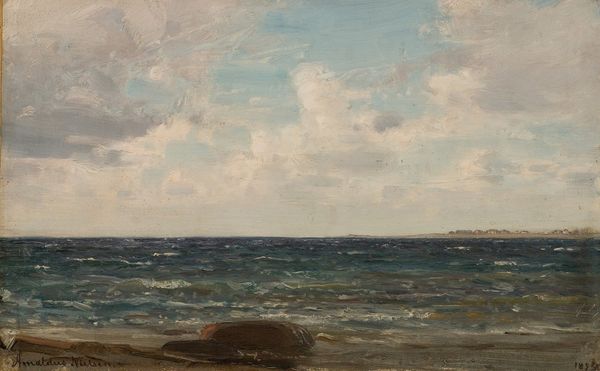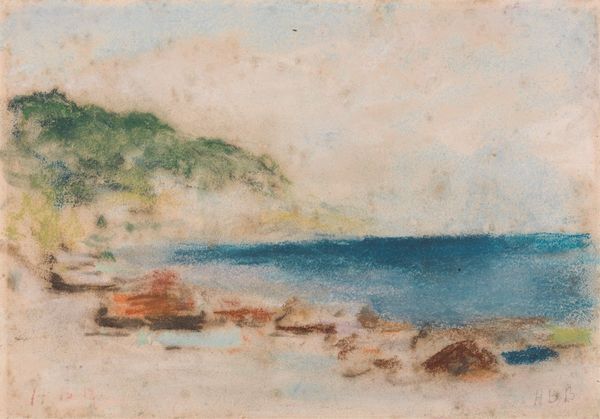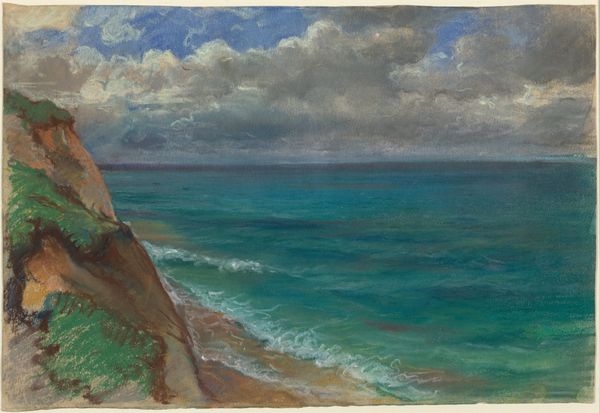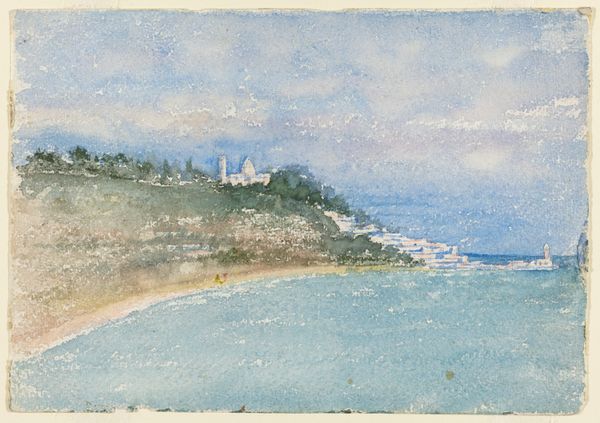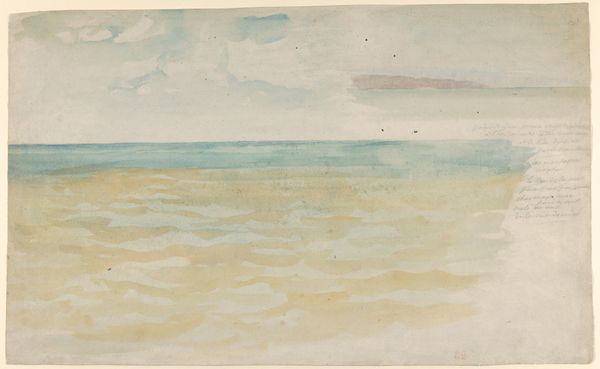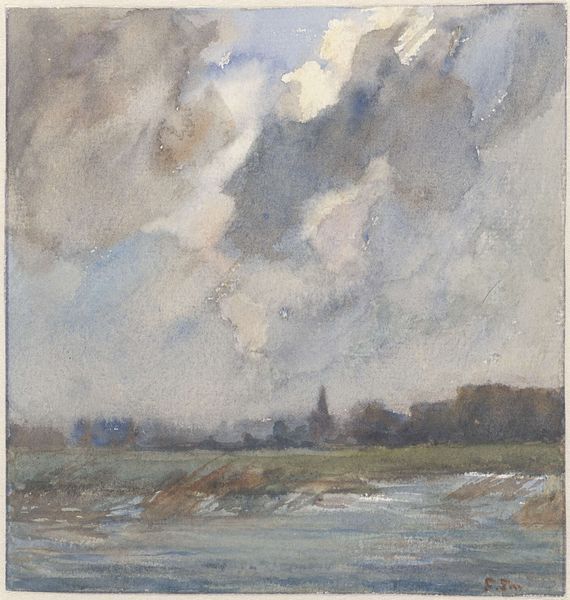
drawing, painting, plein-air, paper, watercolor
#
drawing
#
water colours
#
painting
#
plein-air
#
landscape
#
paper
#
oil painting
#
watercolor
#
coloured pencil
#
romanticism
#
realism
Dimensions: 137 × 224 mm
Copyright: Public Domain
Curator: I find myself immediately drawn into the muted tonality. It evokes such a quiet, reflective mood. Editor: And what could those gray-blue hues represent to an early 19th-century audience, perhaps feeling disenfranchised or unseen in a world on the cusp of transformation? Let’s unpack "View at Étretat," created circa 1827 by Paul Huet. It's a watercolour over graphite on paper, and it captures the famous cliffs of Étretat in Normandy. Curator: Ah, yes, Étretat! Its arches are natural cathedrals. One sees those towering arches mirrored elsewhere, not just in gothic structures but even in psychological constructs like Jung's idea of the Self striving towards individuation. The artist seems to want us to engage the immensity, yet feel diminutive in relation to its forms. Editor: Exactly! And in this period, post-French Revolution, what is more immense than the questions of societal restructuring and self-definition? The tiny figures in the foreground… are they embracing a changing world, or overwhelmed by its scope? We have people confronting sublime, even overwhelming, change—like those we deal with today, with our environmental crisis. Curator: But don't those tiny figures serve another symbolic role, tethering us to this world? They represent humankind and their role in the landscape. You almost feel you are seeing every-man in that image. Editor: Interesting... the landscape tradition has often excluded marginalized bodies. How could this watercolor perhaps play into existing romantic conceptions of landscape in relation to privilege? Curator: Possibly! While landscape certainly has political resonance, think about the universal symbolism inherent in the ocean—constant flux, boundaries blurred. Editor: Mmm, an excellent point. I’m also struck by how impressionistic the watercolor feels, given the period. So ephemeral, much like the concerns and aspirations of that era, wouldn’t you say? Curator: Absolutely, this rendering, more sketch than highly-refined picture, enhances that mood and links it to broader cultural attitudes in its day. It opens possibilities rather than closing them, doesn't it? Editor: Indeed. Thinking about this scene as a portal—into environmental consciousness or social critique—it really underscores how landscapes function as reflections of society. Curator: And how effective art, regardless of period, resonates across time and experience, carrying forward echoes that shape our perception.
Comments
No comments
Be the first to comment and join the conversation on the ultimate creative platform.
